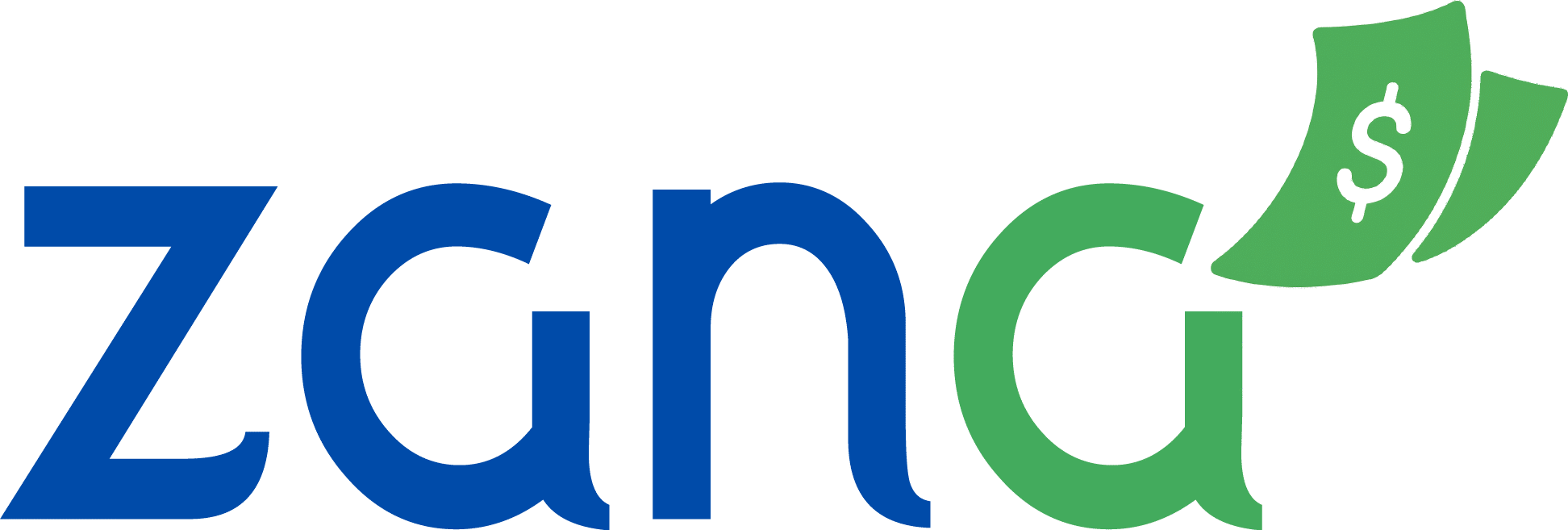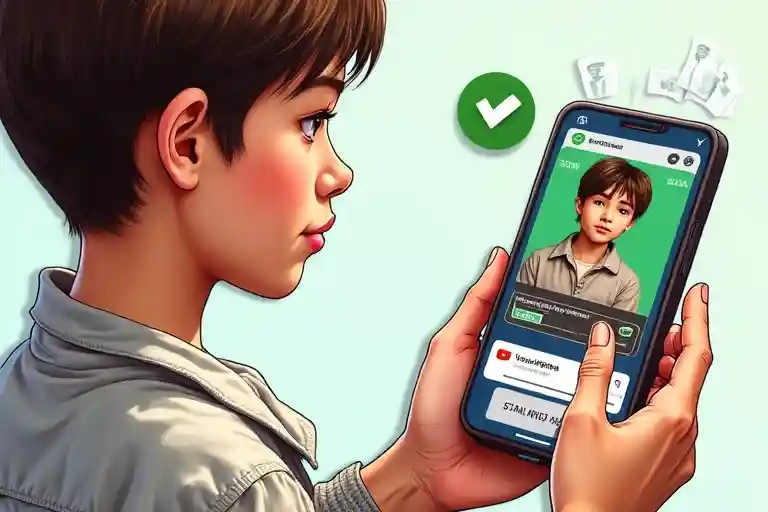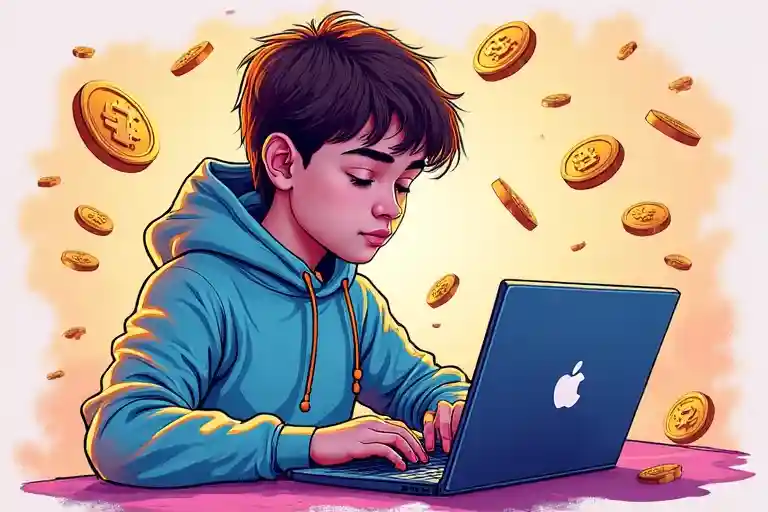Last updated: June 2025
Alright, let’s get real for a sec. You’re probably scrolling through TikTok or Insta, seeing all sorts of stuff about crypto, and maybe your brain’s doing that dial-up modem sound trying to figure it all out. What if I told you there’s a way to actually GET some crypto – for FREE – just by learning a bit about it? No, seriously! We’re talking about coinbase learning rewards. You’ve likely heard whispers about it, maybe seen a post or two. Is it legit? Can YOU, as a teen, actually get in on this? And how do you avoid the sketchy stuff? Buckle up, because we’re about to dive deep into the world of coinbase learning rewards, how they work, what the real deal is for teens (especially in the US), and how to get started without getting lost in the crypto-sauce. We’ll cover everything from signing up (with your parents’ help, super important!) to what to do if those rewards seem to be playing hide-and-seek. Plus, we’ll even peek at what other folks are saying on places like Reddit. Ready to potentially add some crypto to your name without spending your allowance? Let’s go!
What Exactly ARE Coinbase Learning Rewards? (And are they legit?)
So, what’s the lowdown on coinbase learning rewards? Think of it like this: Coinbase, which is one of the BIGGEST and most well-known crypto exchanges out there (kinda like a bank, but for digital currencies), wants people to understand more about different cryptocurrencies. To do that, they’ve set up these educational modules. You watch short videos or read quick lessons about a specific crypto project, answer a few easy quiz questions, and BAM! They drop a small amount of that crypto into your Coinbase account. It’s their way of saying, “Hey, thanks for learning!” And yeah, it’s totally legit. Coinbase is a publicly traded company in the US, so they’re not about pulling fast ones. I was pretty skeptical myself when I first heard about it – free money usually has a catch, right? But with coinbase learning rewards, the “catch” is that you’re genuinely learning something new, which is pretty cool. The amount of crypto you get for each lesson isn’t usually enough to buy a Lambo (sorry, gotta manage expectations!), but it’s a fantastic way to start your crypto journey without any financial risk. Plus, you get to discover new and interesting crypto projects you might not have heard of otherwise. It’s a win-win: you learn, they get more people educated on crypto. Simple as that!
Now, for the youngster element. Coinbase’s principal platform calls for customers to be 18 or older to create their own account. This is trendy stuff for monetary platforms because of regulations (uninteresting, I understand, but essential!). So, in case you’re under 18, you’ll want to get your parents or a felony parent worried. They can create a Coinbase account, and you can explore the mastering rewards with their supervision and permission. This isn’t just a proposal; it’s a need to-do to preserve things safe and above board. Think of it as them holding the keys to the automobile while you’re getting to know to pressure – they’re there to ensure the whole thing goes smoothly. It’s a exquisite possibility to study crypto collectively! Maybe you could even train them a thing or two after you’ve aced a few quizzes. If you want to explore more about different ways to get your hands on some digital currency, check out these crypto earning platforms for beginners.
Does Coinbase Still Offer Learning Rewards? The Real Deal in June 2025
Okay, so you’re hyped about getting some free crypto through coinbase learning rewards, but then you hear a friend, or maybe a random comment online, say, “Wait, does Coinbase still offer learning rewards?” It’s a valid question! The crypto world moves FAST – like, super-fast. What was a thing yesterday might be different today. The short answer is: YES, Coinbase generally still offers learning rewards. However, they aren’t a constant, never-ending buffet of free crypto. The availability of these rewards can fluctuate. Sometimes there are several opportunities available, and other times it might look a bit sparse. Think of them like limited-edition sneaker drops – they come and go, and you need to be kinda in the loop. New learning campaigns for different cryptocurrencies are added periodically, and existing ones can expire once their budget is used up.
So, what’s the actual deal in June 2025? The excellent manner to recognise for positive is to log into a Coinbase account (again, with parental assist if you’re underneath 18) and test the “Learn and Earn” or “Learning Rewards” section. It’s generally pretty visible at the dashboard or inside the “Assets” or “Earn” sections. If you don’t see any offers, don’t panic! It does not always imply they’re gone all the time. It ought to simply be a temporary dry spell, or maybe the cutting-edge offers aren’t available for your precise location, or you may have already finished all the to be had ones (you crypto whiz, you!). My buddy Alex became superb bummed closing month due to the fact he logged in and saw nothing. He idea he neglected the boat. But then, every week later, increase! Two new getting to know opportunities popped up. So, endurance, young padawan! Keep checking returned. It’s additionally a great concept to make sure your Coinbase app (if you’re using one) is updated, as that could now and again affect what you see.
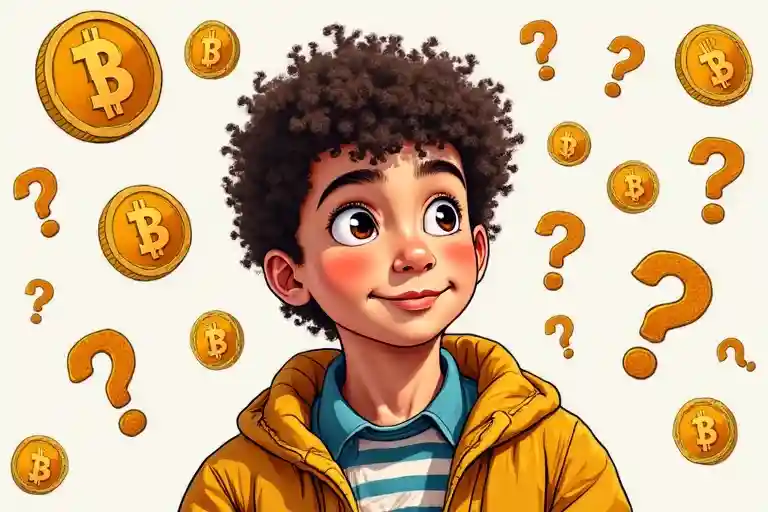
Coinbase Learning Rewards Sign Up: Your Step-by-Step Guide (Teen Edition)
Alright, let’s talk about getting started with coinbase learning rewards sign up. Since you’re a teen, this is where teamwork with your parents or guardian comes in BIG TIME. Coinbase requires users to be 18+ to open an account themselves. So, this guide is really for your parent/guardian to follow, with you as their awesome crypto co-pilot!
- Parent/Guardian Creates a Coinbase Account: They’ll need to go to the official Coinbase website (make SURE it’s the real one – coinbase.com – and not a fake lookalike!) and sign up. They’ll need to provide personal information, like their name, email address, and date of birth.
- Secure the Account: This is SUPER important. They should set up a strong, unique password and enable two-factor authentication (2FA). 2FA adds an extra layer of security, like needing a code from their phone in addition to the password. Think of it as a double-lock on your crypto treasure chest.
- Complete KYC (Know Your Customer) Verification: This sounds fancy, but it’s a standard process for financial services. Your parent/guardian will need to verify their identity, usually by providing a photo of their government-issued ID (like a driver’s license or passport) and sometimes a selfie. This helps Coinbase prevent fraud and comply with regulations. It might feel a bit like a spy movie, but it’s all about keeping things legit and secure. Explain to your parents that this is normal and helps protect everyone.
- Navigate to the Learning Rewards Section: Once the account is set up and verified (this can take a little time, so be patient!), it’s time to find the goods! Log in, and look for a section typically labeled “Learn and Earn,” “Learning Rewards,” or sometimes it’s under “Earn” or even promoted on the main dashboard. It’s usually pretty easy to spot.
- Start Learning and Earning! Browse the available learning modules. Each one will show you which crypto you can earn and roughly how long the lessons will take. Click on one that looks interesting, watch the short videos or read the info, and then take the quiz. The quizzes are usually multiple-choice and not too tricky if you’ve paid attention.
A quick tip: Don’t just rush through the lessons to get to the quiz! The whole point is to actually learn something about these different crypto projects. Who knows, you might discover the next big thing (or at least understand what your friends are talking about). This process can be a cool bonding experience with your parents too. They get to understand a bit about crypto, and you get to lead the way (with their permission, of course!). It’s like, “Mom, Dad, check out this new DeFi protocol!” They’ll be so impressed (or adorably confused, which is also fun). For other ways to earn some digital cash, you might find information about crypto faucet earn free crypto interesting.
Getting Past “Pending” – What’s the Deal?
Sometimes, after you complete a lesson for **coinbase learning rewards**, you might see your reward as “pending.” Don’t freak out! This is usually normal. It can take a little while for the crypto to actually land in the account. This could be due to network congestion on the specific blockchain of the crypto you earned, or just internal processing times at Coinbase. It typically resolves within a few hours, but sometimes it can take a day or two. If it’s been longer than that, and you’ve double-checked everything, then it might be time for your parent/guardian to reach out to Coinbase support. Just remember, patience is a virtue, especially in the crypto world!
Unlocking Those Sweet Rewards: How to Get $10 Free on Coinbase (and maybe more!)
So, you’ve seen the claims: “How to get $10 free on Coinbase!” or even “How to get $200 free from Coinbase!” Let’s break down how these **coinbase learning rewards** translate into actual crypto in your (parent’s) account. The $10 offers are pretty common. Usually, a learning module for a specific cryptocurrency will offer a few dollars’ worth of that coin upon completion. For example, you might learn about a new project like “AwesomeCoin” and get $3 worth of AwesomeCoin. Then you learn about “SuperToken” and get another $3 of that. Do a few of these, and you can easily hit that $10 mark or more in various cryptos!
What about those $200 claims? Well, those are less about a single reward and more about the *cumulative* potential over time, or sometimes special, rarer promotions. It’s not typically a one-shot “do this one thing and get $200” deal with the standard learning rewards. However, Coinbase has occasionally run bigger campaigns or referral bonuses that could contribute to a larger sum. The key is consistency. By regularly checking for new **coinbase learning rewards** opportunities and completing them, the small amounts can add up. Think of it like collecting rare Pokémon cards – each one has value, and together they make an impressive collection. My cousin, Jake, diligently did every learning reward he could find over a few months. Individually, they were just a few bucks each, but he eventually had a nice little portfolio of different cryptos, all for free! To see how those small amounts can grow or to plan what to do with them, using a crypto profit calculator usd figure can be super helpful once you’ve accumulated some.
A Typical Learning Module Walkthrough:
Most **coinbase learning rewards** modules follow a similar pattern. You’ll click on the offer, and it usually starts with a short, animated video (like 1-3 minutes long) explaining what the cryptocurrency is, what problem it solves, and how it works. These are generally pretty well-made and easy to understand, even if you’re new to crypto. After the video (or sometimes a series of short text-based slides), there will be a simple multiple-choice question. Get it right, and you earn a portion of the reward for that lesson. There are usually 3-5 such lessons/quizzes per cryptocurrency campaign. If you get a question wrong, don’t sweat it! They almost always let you try again. The goal isn’t to trick you, but to make sure you’ve grasped the basic concepts. It’s like those mini-games in your favorite RPG that give you a small prize – fun, low-pressure, and you get something cool at the end!
Coinbase Learning Rewards Not Showing? Troubleshooting Tips & Tricks
One of the most common frustrations you might see people talking about online, or even experience yourself, is the dreaded “Coinbase learning rewards not showing” issue. You log in all excited, ready to earn some free crypto, and… nada. It’s like showing up to a pizza party and finding an empty box. So, what gives? There are actually a few reasons why this might happen, and often, it’s not a major crisis.
First off, eligibility is a big one. Not all rewards are available in all regions due to local regulations. So, if you’re outside the main eligible countries (Coinbase has a list on their support site), that could be why. Also, your account (or your parent’s account) needs to be fully verified. If the KYC process isn’t complete, or if there’s some issue with the verification documents, that can restrict access to rewards. Another common reason is that you’ve simply completed all the currently available offers! High five, crypto scholar! New ones do pop up, but there might be periods with no active campaigns you haven’t done yet. Sometimes, the offers are for new users only, or there’s a limited number of spots, and they fill up fast – like concert tickets for that artist everyone’s obsessed with on TikTok. It can also be a simple tech glitch. Try the classic “turn it off and on again” approach – log out and log back in, clear your browser cache, or try a different browser or the Coinbase mobile app. Make sure your app is updated to the latest version. If you’ve tried all that and you *still* think there should be rewards available that you’re not seeing, your parent/guardian can reach out to Coinbase Support. They’re usually pretty helpful. Just be prepared to provide all the necessary account details for them to look into it. When the rewards aren’t showing, it’s easy to feel like that confused Travolta meme, but usually, there’s a simple explanation!
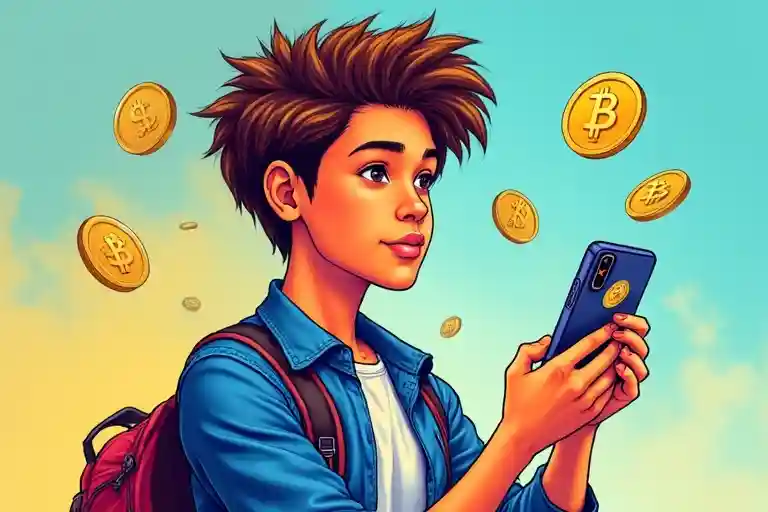
Coinbase Learning Rewards Reddit: What’s the Community Saying?
If you want the real-time scoop, the triumphs, the frustrations, and sometimes even the answers to the quiz questions (shhh!), then the Coinbase Learning Rewards Reddit threads are where people often flock. Subreddits like r/Coinbase can be a goldmine of information, but also, you know, it’s Reddit – so take everything with a grain of salt and a sense of humor! You’ll find users sharing when new rewards drop, which can be super helpful because, as we mentioned, they can appear and disappear. People also discuss their experiences, how long it took for rewards to show up, and any glitches they encountered. This community aspect can be pretty cool; it’s like having a bunch of study buddies for your crypto lessons.
However, there’s a flip side. You’ll also see posts about **Coinbase learning rewards not showing** (a VERY common topic) or people complaining about account issues. Remember, folks are more likely to post when they have a problem than when everything is smooth sailing. And about those **Coinbase learning rewards Answers** you might find floating around? While it can be tempting to just copy-paste answers to get the crypto ASAP, you’re kinda missing the point. The idea is to *learn*. Plus, sometimes the questions or answers might change slightly. My advice? Use Reddit to stay informed about new opportunities and to see if others are experiencing similar issues if you run into trouble. But try to do the actual learning part yourself. It’s more rewarding (pun intended!) in the long run. Plus, understanding a bit about what you’re earning is just smart. You wouldn’t buy a mystery flavor of ice cream without at least *trying* to guess what’s in it, right? Maybe after learning, you’ll want to explore crypto passive income best ways for your newly acquired assets.
Coinbase Learning Rewards Review: The Good, The Bad, and The Crypto
So, let’s break it down: what’s the overall verdict on coinbase learning rewards? Like anything, it has its pros and cons, especially when you’re a teen trying to navigate the crypto space (with your parents’ help, of course!).
The Good:
- It’s FREE Crypto: This is the biggest draw. You’re getting valuable digital assets without spending a dime of your own money. For teens, this is an awesome way to dip your toes into crypto without any financial risk.
- You Actually Learn Stuff: The modules are designed to be educational. You’ll learn about different cryptocurrencies, what they do, and the technology behind them. This knowledge is way more valuable than the few dollars you earn. It’s like, “Cool, I got $3 of The Graph (GRT), AND I now know what an indexing protocol is!” (Okay, maybe you won’t be *that* excited about indexing protocols, but you get the idea).
- Low Barrier to Entry (with parental help): Once your parent has an account, accessing the rewards is usually straightforward. The lessons are short and the quizzes are easy.
- Discover New Projects: You get introduced to a variety of crypto projects, some of which might be up-and-coming. It’s a good way to broaden your crypto horizons beyond just Bitcoin and Ethereum.
The Bad:
- Limited Availability: Rewards aren’t always there. They can be sporadic, and popular ones run out fast. This can be frustrating if you’re eager to earn.
- Small Amounts: Don’t expect to get rich. Each reward is typically only a few dollars’ worth of crypto. It’s more about the learning and the introduction than making bank.
- Crypto Volatility: The value of the crypto you earn can go up or down… a LOT. That $3 you earned today might be worth $2 tomorrow, or $4 (yay!). It’s the nature of the crypto beast.
- Account Requirements (18+): For teens, the biggest hurdle is needing a parent or guardian to open and manage the Coinbase account. This is non-negotiable for staying compliant.
- Potential for “Coinbase learning rewards gone”: Sometimes campaigns end abruptly, or you might find previously available rewards are no longer listed, which can be a bit of a letdown.
For me, the best part was genuinely understanding a little bit more about how diverse the crypto world is. Before, it was all just “Bitcoin.” Now, I can at least pretend to know what someone means when they talk about oracles or layer-2 solutions! When you compare coinbase learning rewards to other “free crypto” methods, it holds up pretty well, especially on the learning front. Check out this quick comparison:
| Method | Effort Level | Potential Reward | Learning Value | Typical Risk (for teens) |
|---|---|---|---|---|
| Coinbase Learning Rewards | Low to Medium (watching vids, quizzes) | Low to Medium (few $ per campaign) | Medium to High (structured learning) | Very Low (if using parent’s account, no investment) |
| Crypto Faucets | Medium to High (repetitive tasks, captchas) | Very Low (fractions of cents) | Low | Low (but time-consuming for little return) |
| Airdrops earn free crypto teens | Medium (social tasks, holding tokens) | Varies Wildly (can be $0 to significant, but rare) | Medium (learn about new projects) | Medium (scam risk, wallet security, often need existing crypto) |
As you can see, for a combination of learning and earning with minimal risk (especially for teens who shouldn’t be risking capital), **coinbase learning rewards** are a solid option. If you’re interested in other ways to earn, exploring something like Top 10 Upcoming Crypto Airdrops in 2025 (UPDATED) can give you more ideas, but always with caution and parental guidance!
Learn and Earn Crypto for Free: Exploring Alternatives
While **coinbase learning rewards** are a fantastic starting point, you might be wondering, “Are there other ways to learn and earn crypto for free?” The answer is yes, but they often come with different levels of effort, risk, and reward. It’s like choosing your character in a video game – each has different stats and abilities! One popular alternative, especially for those willing to put in a bit more consistent effort for very small amounts, is crypto faucets. These are websites or apps that dispense tiny amounts of cryptocurrency in exchange for completing simple tasks, like solving captchas or watching ads. Think of it as a dripping tap – eventually, you might fill a tiny cup. For more on these, you could check out resources like the CoinbaseBest Crypto Faucets 2025 list (remember to always research any platform before using it!).
Another avenue, which can sometimes yield higher rewards (but also comes with more caveats), is participating in crypto airdrops. An airdrop is when a new crypto project distributes its tokens for free to build a community or raise awareness. To qualify, you often need to perform certain tasks like following their social media, joining a Telegram group, or sometimes holding another specific cryptocurrency in your wallet. These can be exciting, but also a prime target for scammers, so extreme caution and research (and parental oversight!) are vital. Not every airdrop is legitimate, and some have complex requirements. However, if you want to learn more about potential opportunities, keeping an eye on dedicated airdrop listing sites can be informative. Exploring options for managing potential earnings, such as a crypto profit calculator binance, could be useful if you start accumulating from various sources, though remember Coinbase is the platform for *these* specific rewards.
Staying Safe with Free Crypto Opportunities
No matter how you’re trying to earn free crypto, safety is PARAMOUNT. Seriously, I can’t stress this enough. If an offer sounds too good to be true (like “Get 1 Bitcoin FREE right now by sending us 0.1 Bitcoin!”), it IS a scam. Always. No exceptions. Never share your private keys or seed phrases for any crypto wallet with ANYONE. Those are like the master keys to your entire crypto stash. With **coinbase learning rewards**, you’re relatively safe because you’re on a reputable platform, but if you venture into faucets or airdrops, the wild west of crypto can get pretty wild. Always use strong, unique passwords for every platform, enable 2FA, and be super skeptical of unsolicited offers or DMs promising free crypto. Your parents’ involvement here is crucial because they can help you spot red flags that you might miss. Remember, the goal is to learn and earn a little, not to lose anything (especially not personal information!).
Safety First! Navigating Coinbase Learning Rewards (and Crypto) Safely as a Teen
Okay, this is probably THE most important section, especially since we’re talking about **coinbase learning rewards** for teens. Crypto can be super exciting, but it also has its risky sides. Think of it like learning to skateboard – you can have a blast, but you also need to wear a helmet and pads, right? So, here’s your safety gear guide for crypto:
- Parental Consent & INVOLVEMENT is Non-Negotiable: I’ve said it before, and I’ll say it a million more times. If you are under 18, you NEED your parents or legal guardian to set up and manage the Coinbase account. This isn’t just a “good idea”; it’s a requirement for using Coinbase and for your own protection. They can help you understand the terms, keep an eye on things, and make sure you’re not accidentally clicking on something sketchy. Make it a team effort!
- Understand Crypto Volatility: The free crypto you earn from coinbase learning rewards can change value. FAST. One day it’s up, the next it might be down. This is totally normal for crypto. Don’t panic if you see the dollar value of your rewards drop. It’s not like a savings account with a fixed interest rate. This is why you should NEVER invest money you (or your parents) can’t afford to lose in crypto in general. Luckily, with learning rewards, you’re not investing your own cash to begin with!
- Scam Awareness – The Internet is Full of Gremlins: There are tons of scams out there. Fake Coinbase login pages, emails promising you extra rewards if you click a link and enter your details, people on social media claiming to be Coinbase support and asking for your password… NOPE. Coinbase will NEVER ask for your password or 2FA codes outside of the official login page. Be super careful about links you click. If in doubt, always go directly to the official Coinbase website by typing it into your browser. That “If it sounds too good to be true, it probably is” saying? It’s like the golden rule of the internet, especially crypto.
- Secure Your (Parent’s) Account: Strong, unique passwords. Two-Factor Authentication (2FA) enabled. These are your best friends in protecting the account. Don’t reuse passwords from other sites! If one site gets hacked, you don’t want a domino effect.
- What About Taxes? (A Little Heads Up): This is more for your parents, but it’s good for you to know. In many countries, including the US, crypto is treated as property for tax purposes. This means if you sell it or trade it, there could be tax implications. Earning it via **coinbase learning rewards** can also be considered income. This is definitely something your parents will need to look into and handle. It’s usually not a huge deal for the small amounts from learning rewards, but it’s better to be aware.
Think of these safety tips as your crypto superpower. They’ll help you navigate this exciting new world without falling into any villainous traps. And hey, maybe learning about this stuff will even make you the go-to crypto expert in your friend group (the responsible one, of course!). If you’re thinking about how to manage any gains, understanding a crypto profit taking strategy secure approach is wise for the long run.
What Happens AFTER You Earn? Managing Your Coinbase Learning Rewards
Congrats! You (with your parents’ help) have successfully navigated the world of coinbase learning rewards and now there’s some actual crypto sitting in the account. So… what now? It’s not like a video game achievement that just sits there; this is actual digital value! First things first, take a moment to appreciate it. You learned something and got rewarded – that’s pretty awesome. Now, you generally have a few options, and again, these are decisions to make *with your parent or guardian*.
You can simply **Hold** it (or HODL, as they say in crypto slang – it’s a whole story, look it up, it’s a fun meme!). Many cryptocurrencies have the potential to increase in value over time (though, remember, they can also decrease!). So, just letting it sit in the Coinbase account is a perfectly valid strategy, especially if it’s a project you believe in after learning about it. Another option is to **Trade** it. Coinbase allows you to convert one cryptocurrency into another. Maybe you earned a bunch of different smaller cryptos from various **coinbase learning rewards** and you want to consolidate them into Bitcoin or Ethereum, or another crypto you’re particularly interested in. Be aware that trading can sometimes have small fees. Finally, you could potentially **Convert to Fiat Currency** (like US dollars) and withdraw it to your parent’s linked bank account. This makes the earnings “real” in the traditional sense. However, keep in mind the amounts from learning rewards are usually small, so after any fees, it might not be a huge amount. Also, remember that selling crypto is a taxable event in many places, which your parents would need to consider.
Whatever you decide, the key is to make an informed choice. Don’t just randomly click buttons! Discuss it, maybe do a little more research on the cryptos you’ve earned. This whole process is a learning experience, from the initial lessons to managing what you’ve earned. It’s your first step into understanding digital assets, and that’s pretty cool. If you’re trying to figure out potential profits from these or other crypto activities, a crypto profit calculator with leverage might be an advanced tool you look at later, but for now, simple understanding is key.
Conclusion
Phew! We’ve covered a TON about coinbase learning rewards, from what they are and if they’re legit (spoiler: they are!) to how you, as a teen, can get involved with your parents’ crucial help and supervision. We’ve looked at troubleshooting common issues like rewards not showing up, peeked at what the Reddit community is saying, and most importantly, dived into how to stay safe in the sometimes-wild world of cryptocurrency. Remember, these rewards are an amazing way to get some free crypto and, more importantly, to *learn* about exciting new technologies and projects. It’s not about getting rich quick; it’s about gaining knowledge and taking your first steps into understanding digital finance.
So, what’s the main takeaway? Coinbase learning rewards are a real, accessible way for teens (with parental guidance!) to start their crypto journey. Be curious, be cautious, and have fun learning! Will you be the next crypto whiz kid? Maybe! But even if not, you’ll definitely be smarter about this whole new digital frontier. What are you waiting for? Chat with your parents, and maybe it’s time to explore those learning modules!
What do YOU think about coinbase learning rewards? Have you tried them? Drop a comment below and share your experience! And hey, if you found this guide helpful, why not share it on TikTok or with your friends who might be curious? For more guides and tips on navigating the crypto world and other ways to earn, make sure to keep checking back with us here at zana.website!
Stay Updated! The world of crypto is always changing. New learning rewards pop up, platforms update their rules, and new safety tips emerge. Keep visiting zana.website for the latest info and guides to help you on your financial journey!
Frequently Asked Questions
1. Is Coinbase Learning Rewards legit?
Yes, Coinbase Learning Rewards is a legitimate program offered by Coinbase, a well-known and publicly traded cryptocurrency exchange. You learn about different cryptocurrencies by watching videos and answering quizzes, and in return, you receive a small amount of that crypto for free directly into your Coinbase account. It’s a real way to earn while you learn.
2. Does Coinbase still offer learning rewards?
Generally, yes, Coinbase continues to offer learning rewards. However, the availability can vary. New campaigns are added periodically, and old ones can expire or run out of their allocated rewards. It’s best to regularly check the “Learn and Earn” section of your Coinbase account (with parental permission if under 18) for current opportunities.
3. How to get $200 free from Coinbase?
Getting $200 free from Coinbase isn’t typically from a single learning reward. While some special promotions or referral bonuses might offer larger amounts, the standard learning rewards are usually a few dollars per campaign. Accumulating $200 would likely involve completing many different learning modules over time and potentially other Coinbase offers.
4. How do I get $10 free on Coinbase?
You can often earn $10 or more on Coinbase by completing several of their Learning Rewards modules. Each module usually offers a few dollars’ worth of a specific cryptocurrency. By participating in a few different campaigns—watching the short educational videos and correctly answering the quizzes—those small rewards can easily add up to $10 or more.
